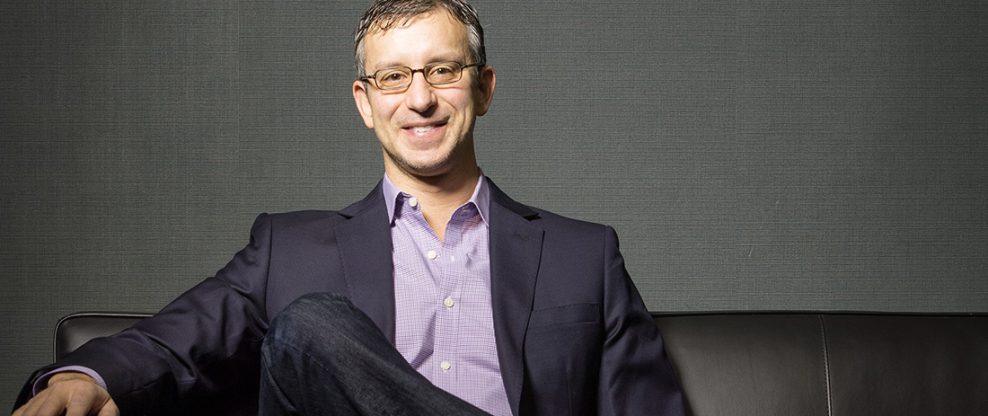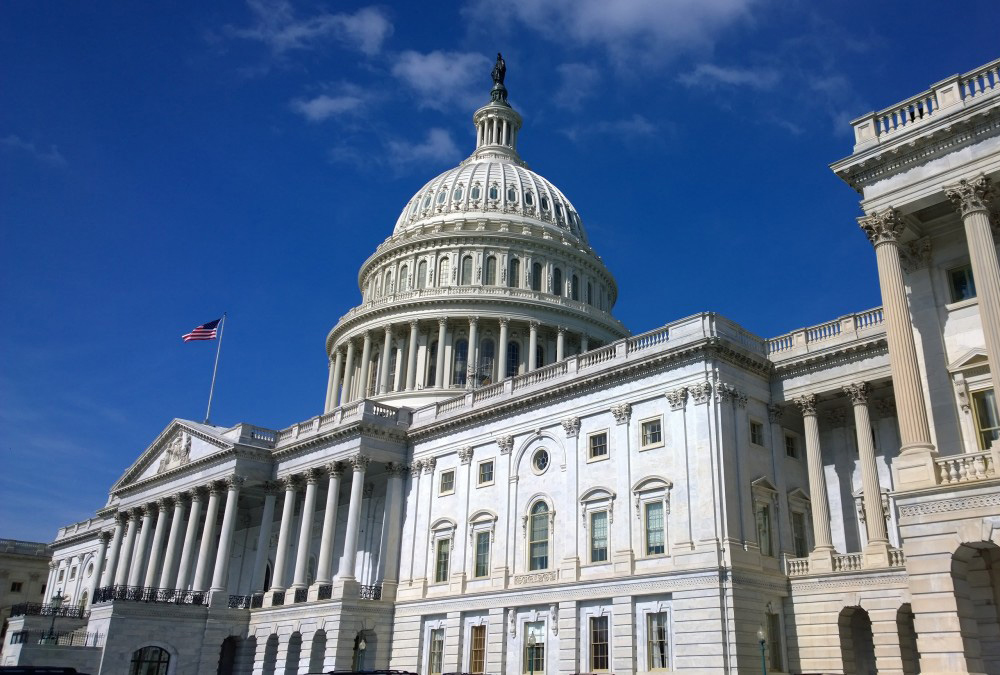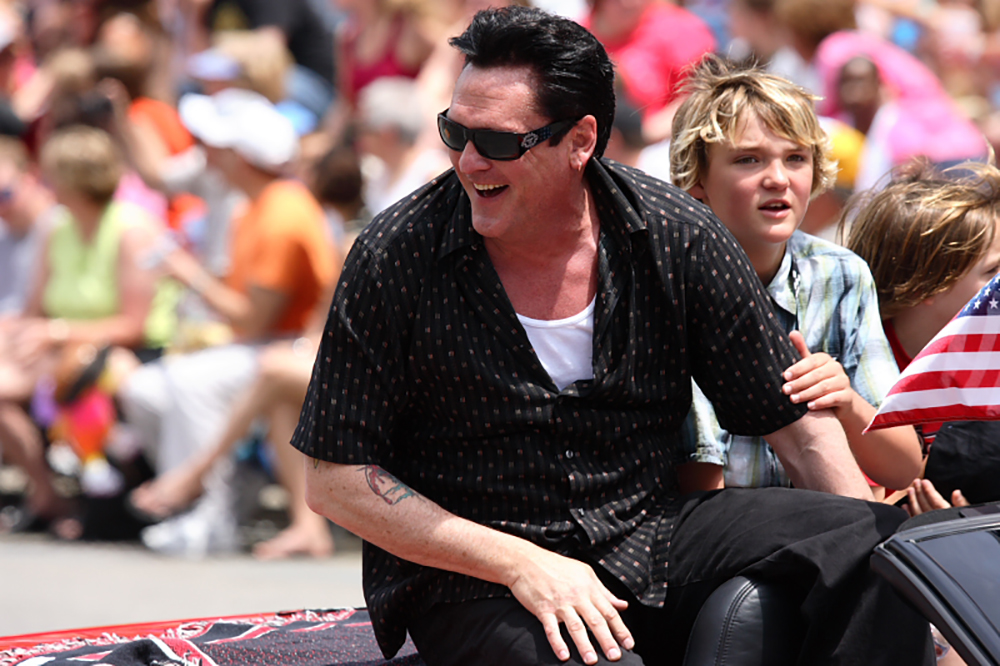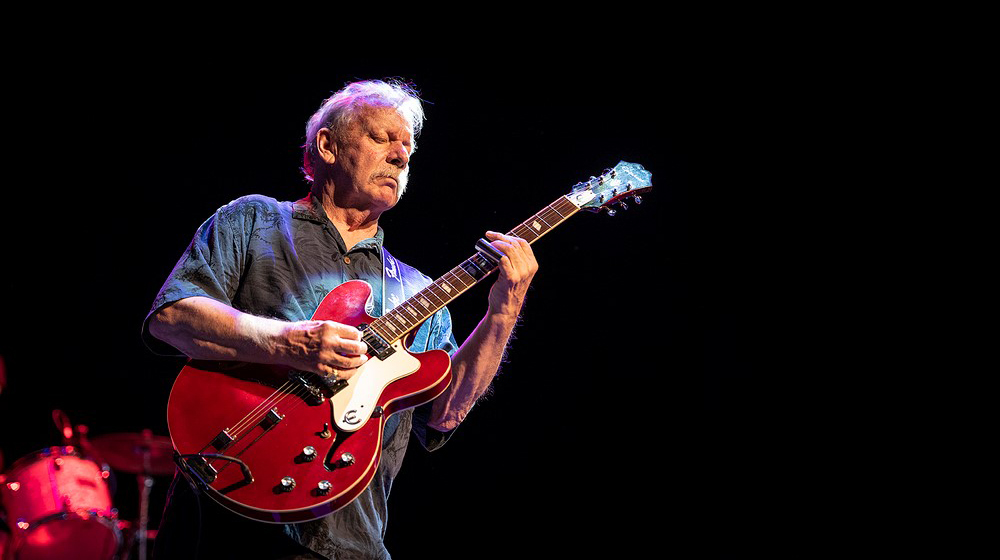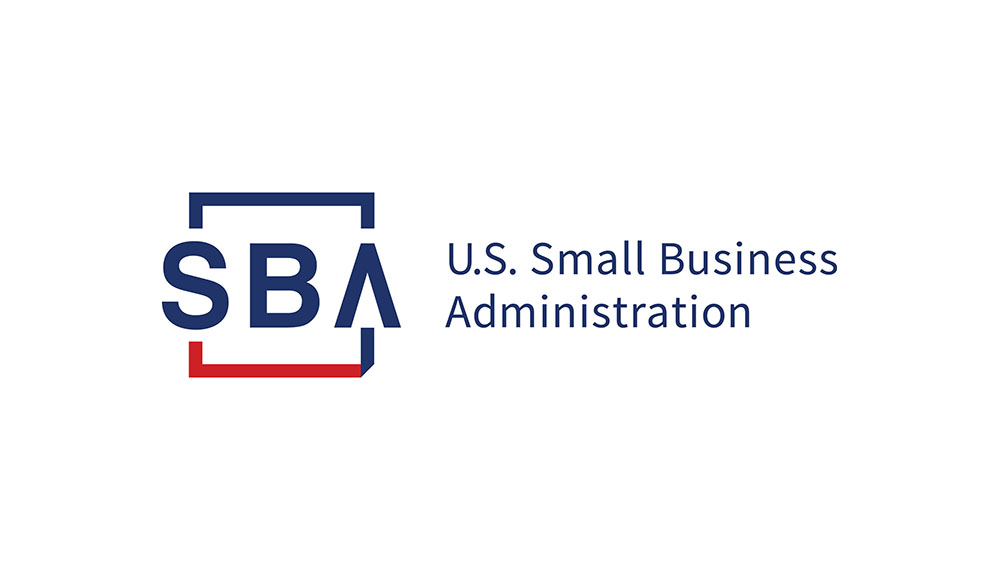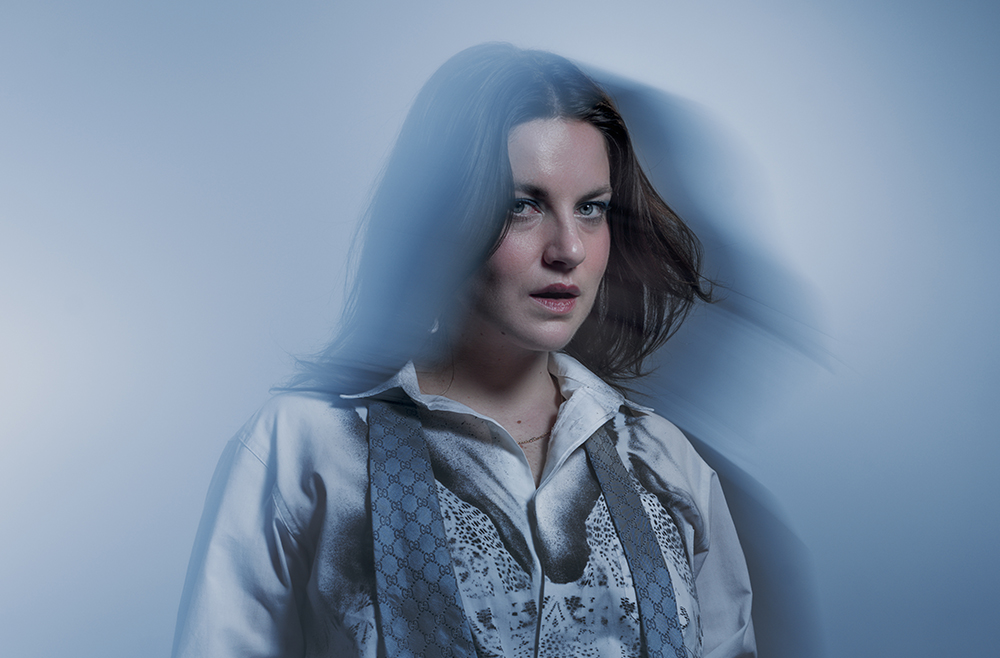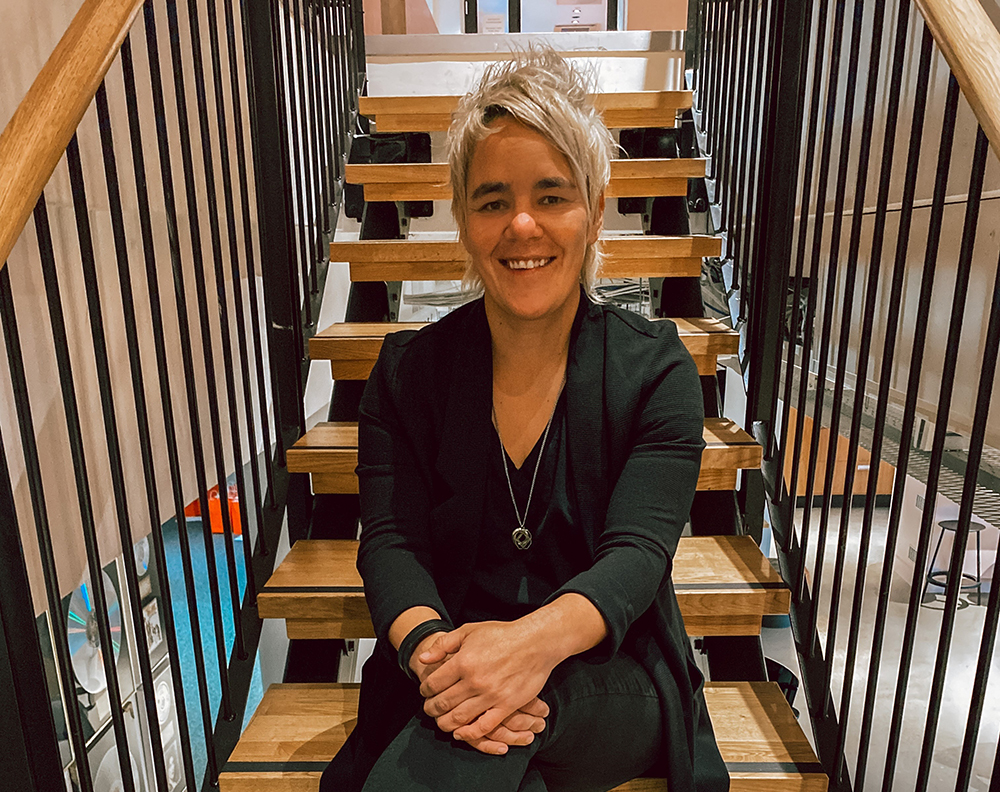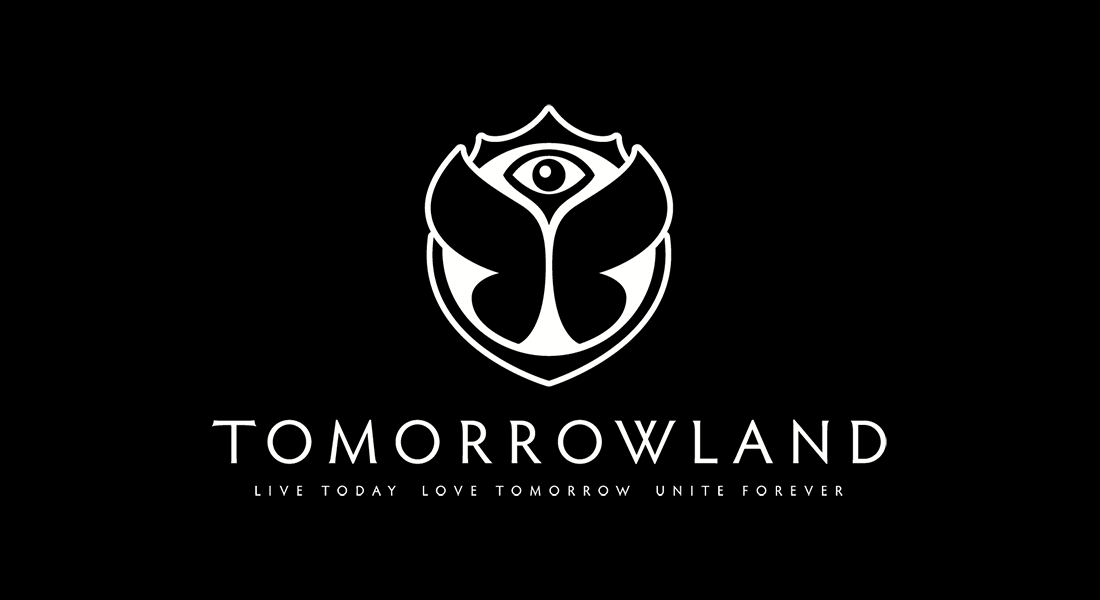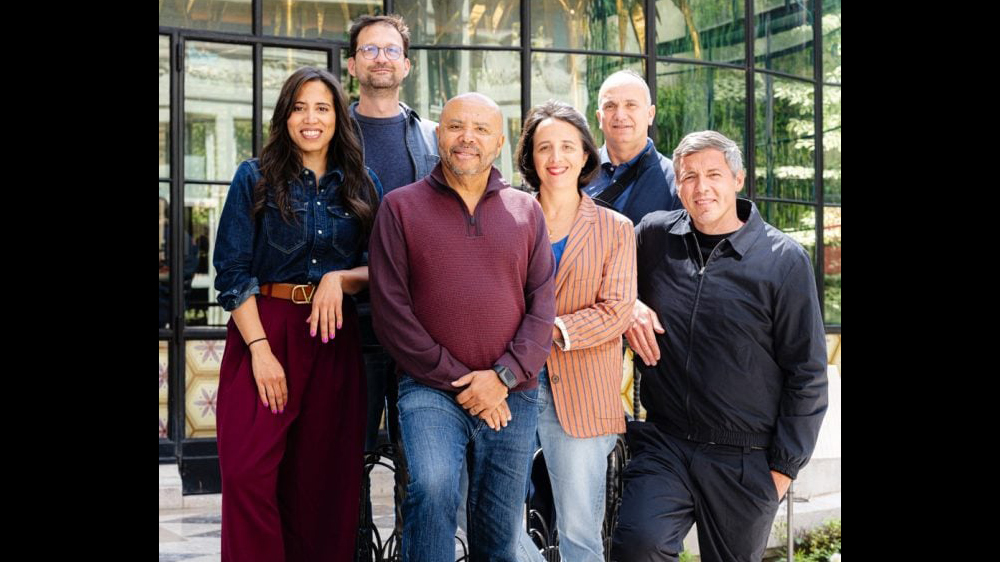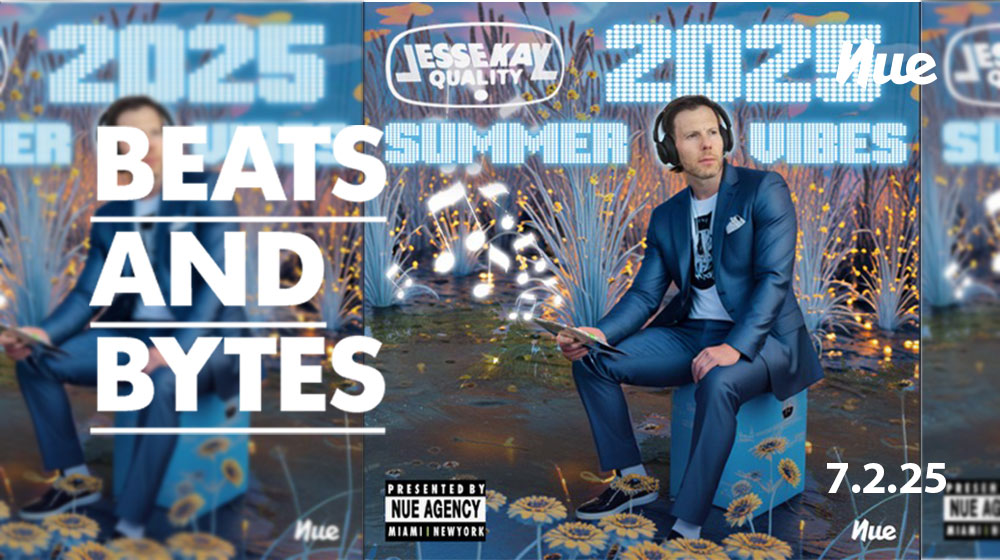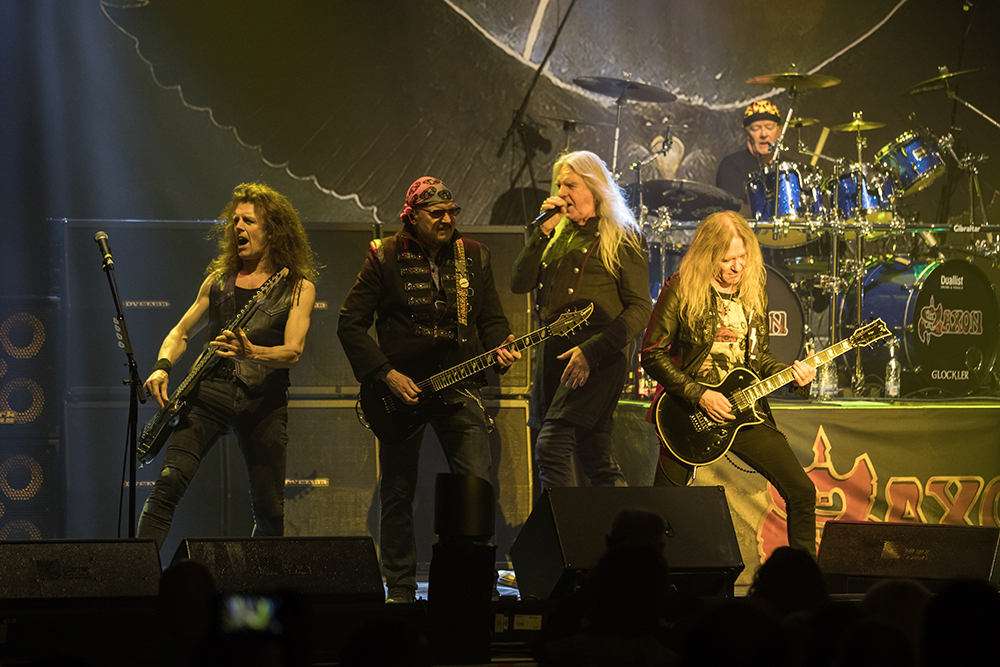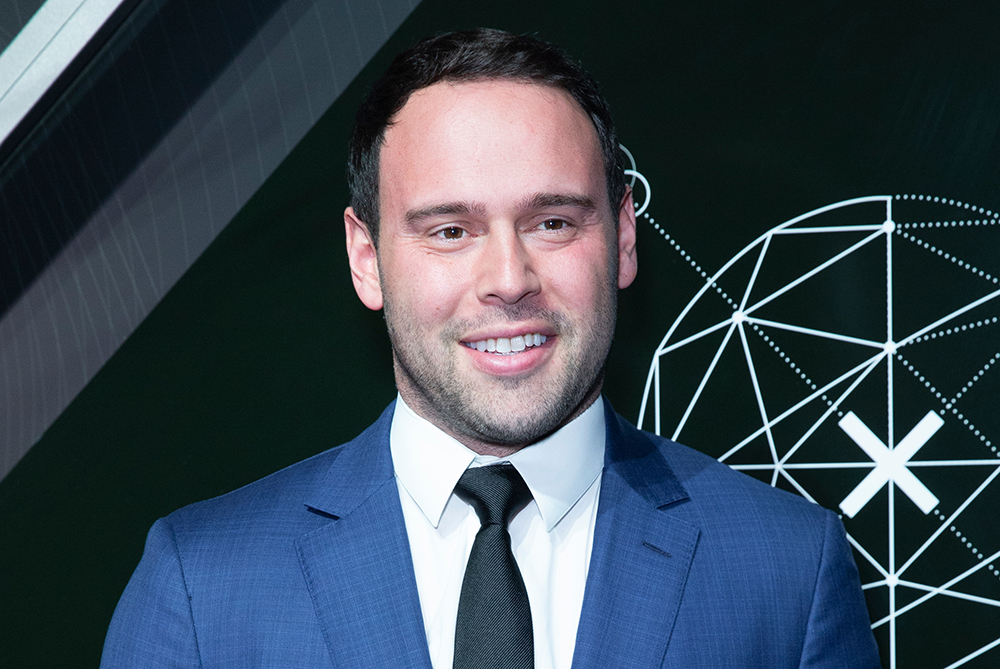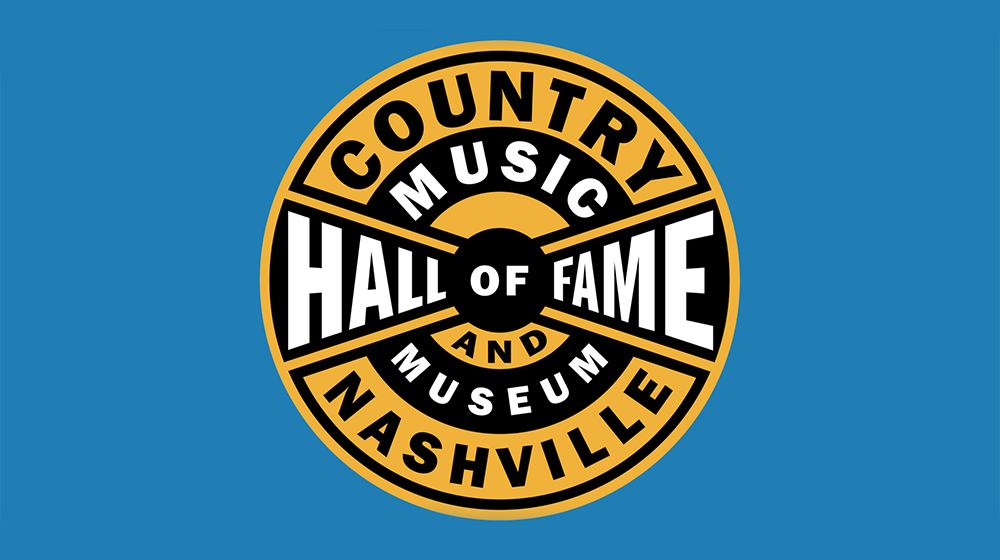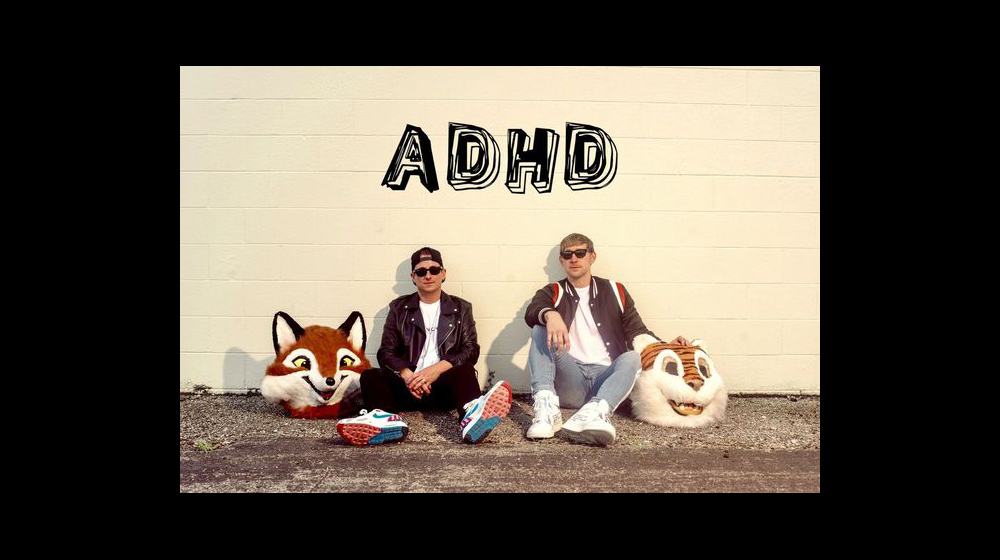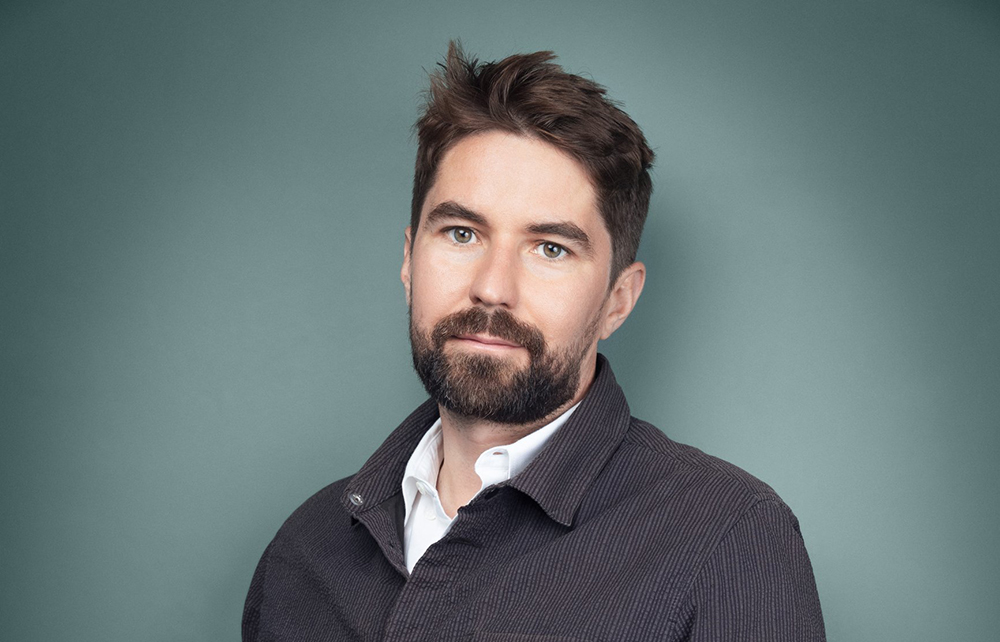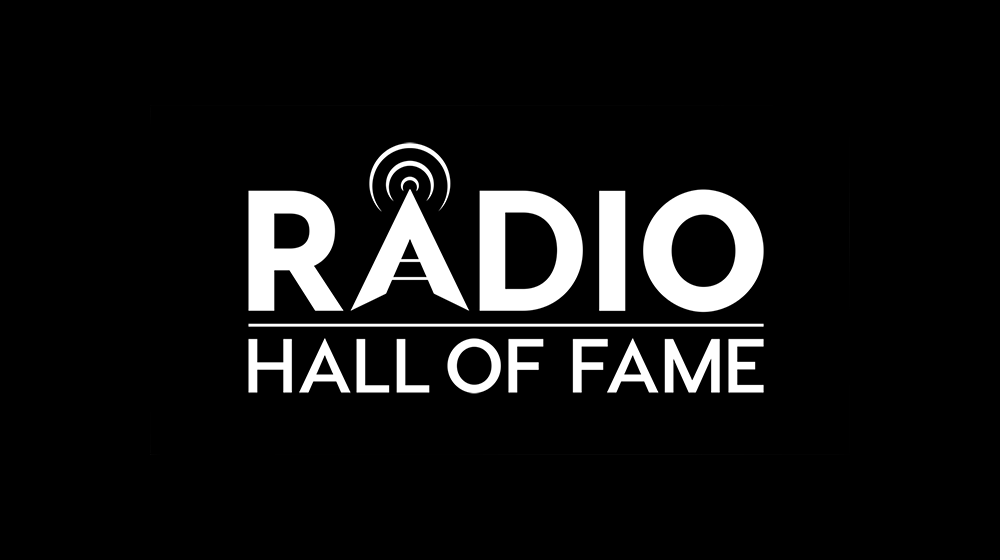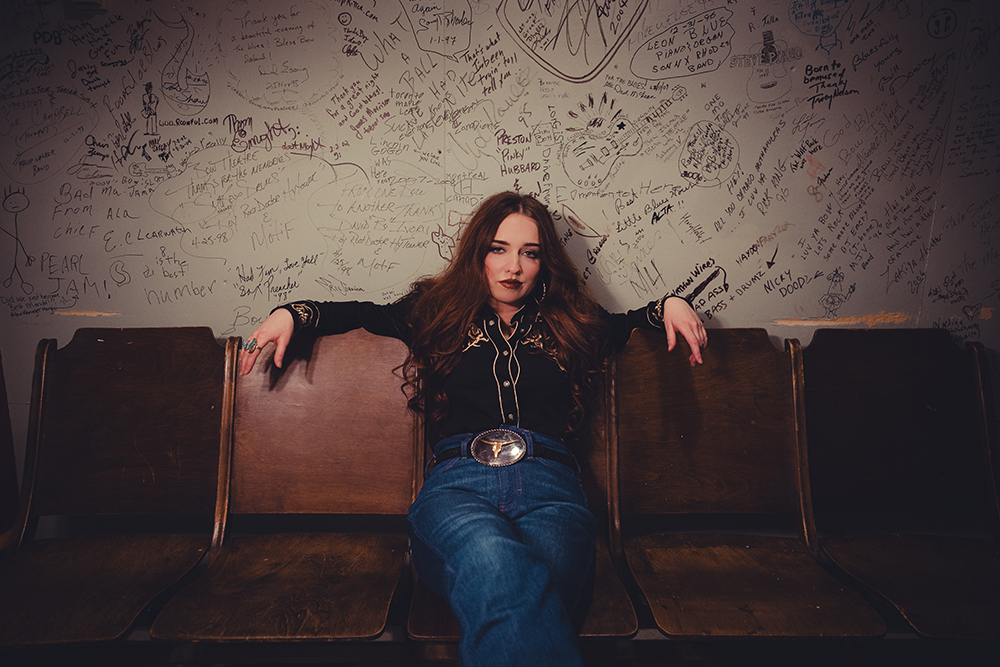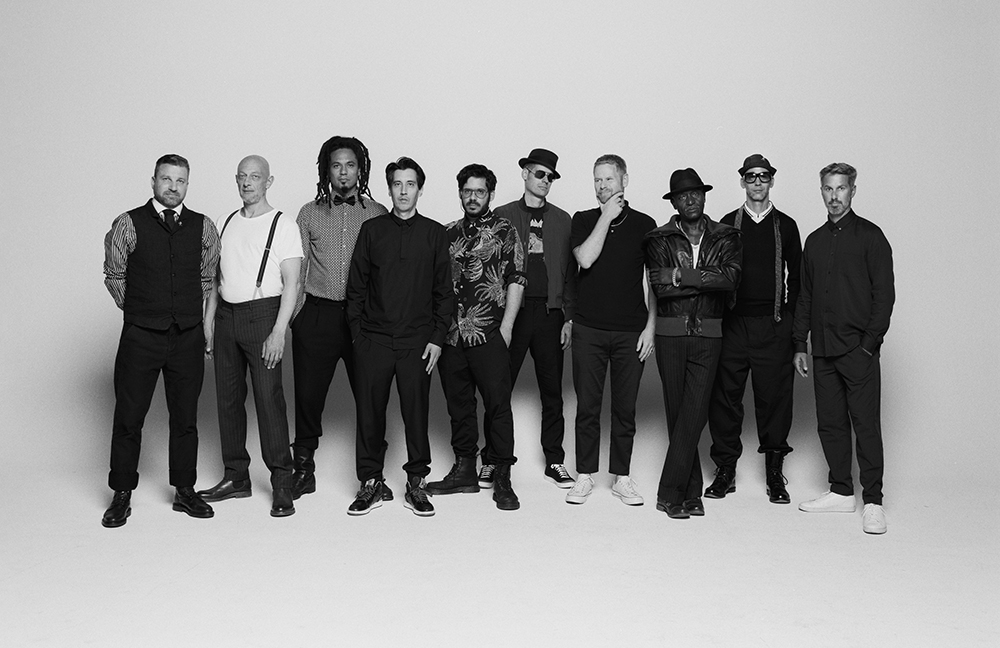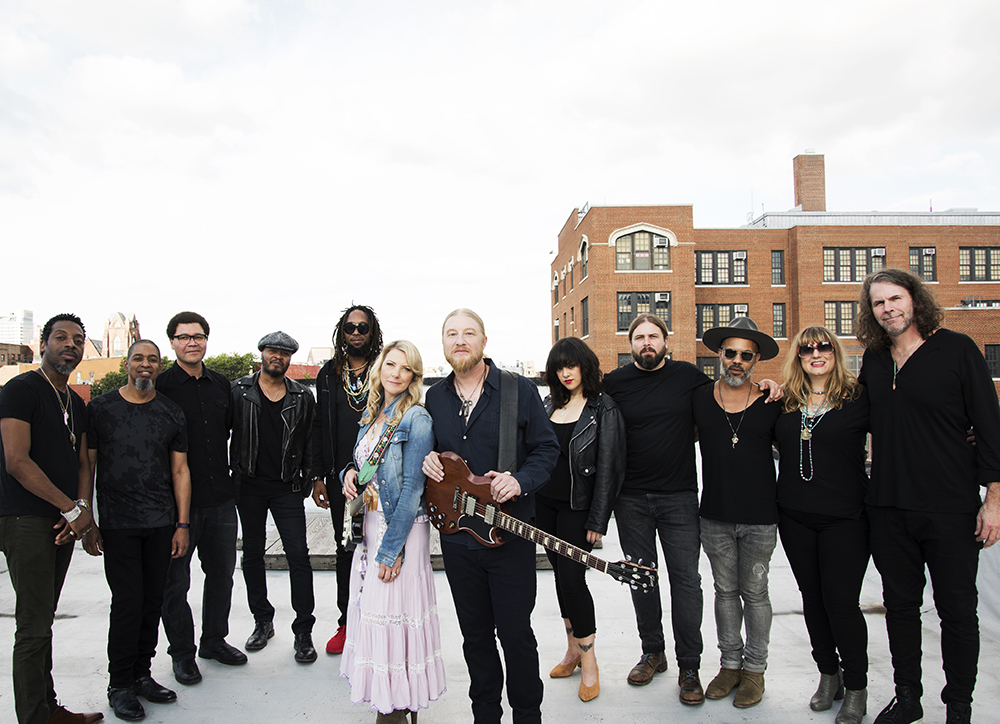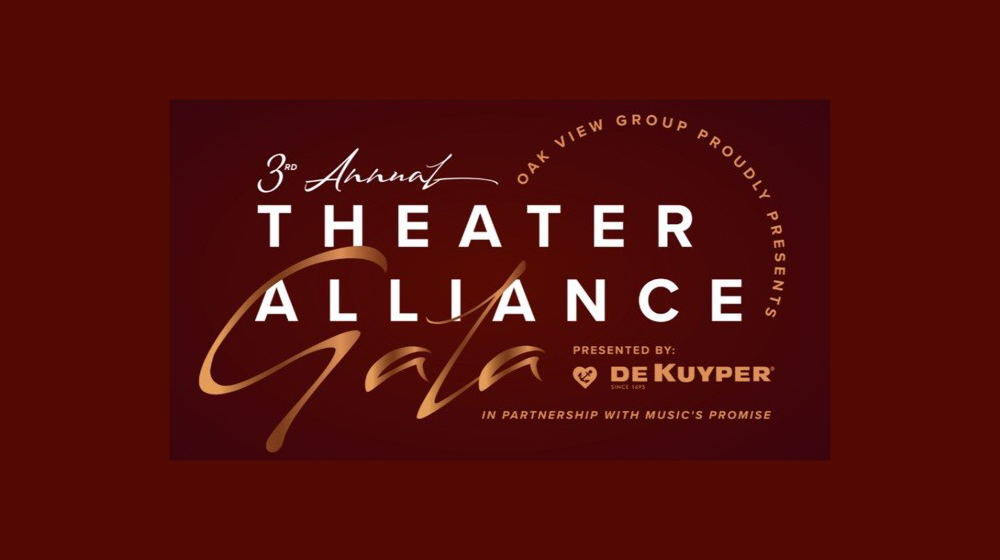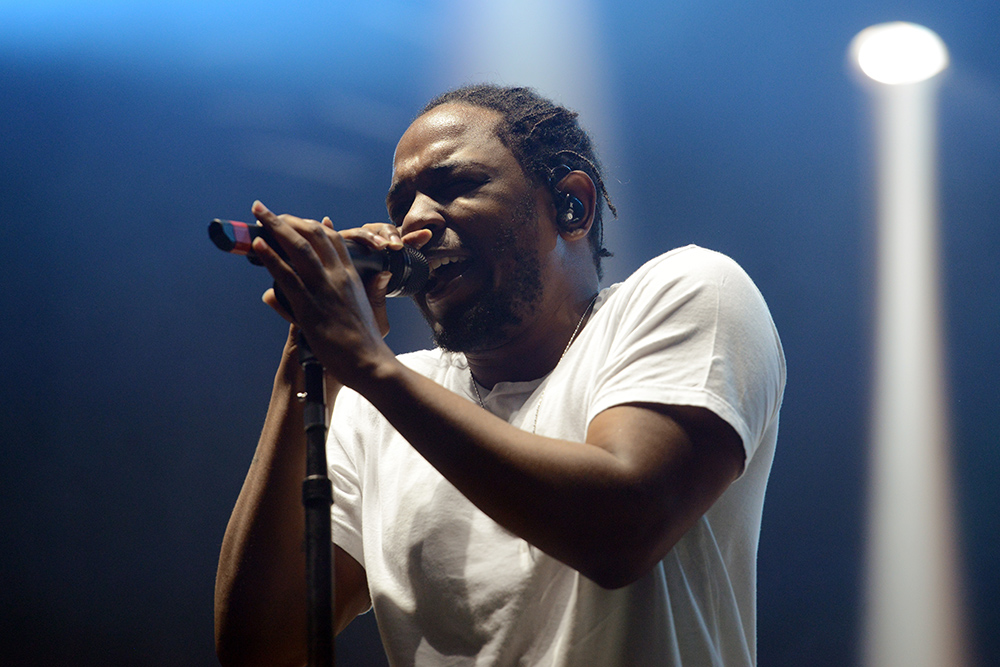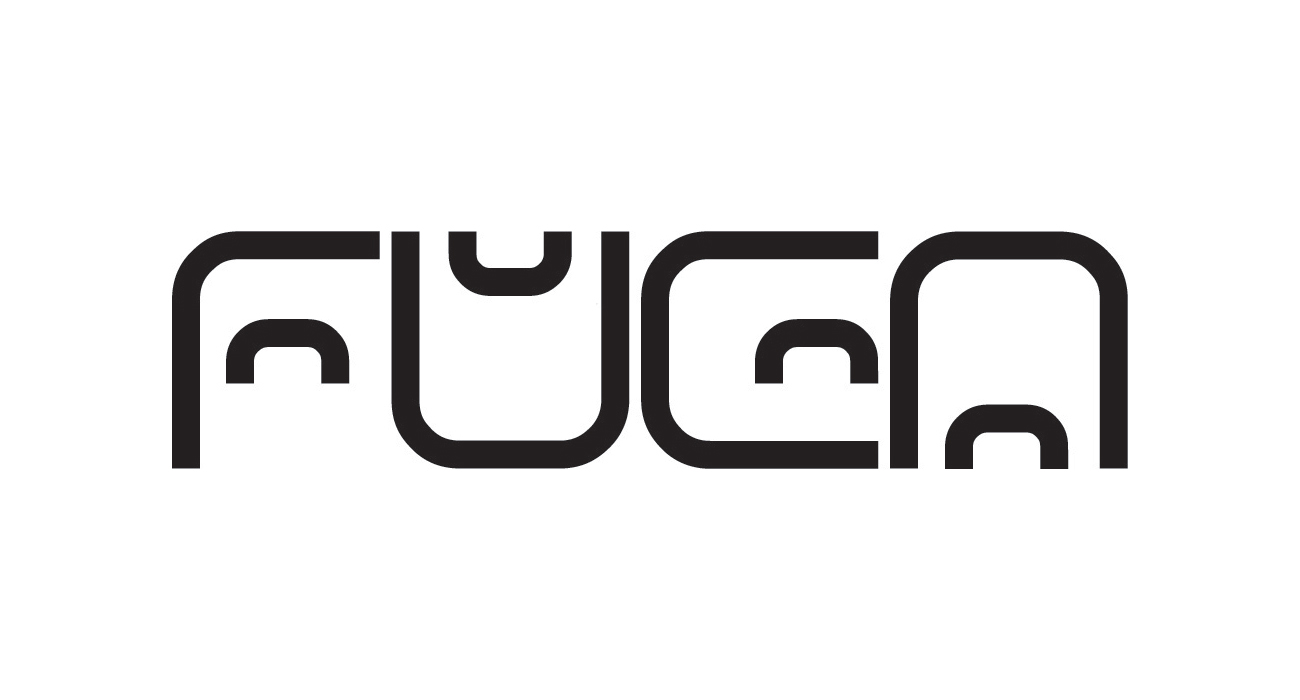This week In the Hot Seat with Larry LeBlanc: David Israelite, President & CEO of the National Music Publishers’ Association.
In his role as a top-level music industry spokesman, David Israelite moves effortlessly between the music publishing and technology sectors while trying to bridge two cultures that are at odds with each other.
Now in his 17th year as president & CEO of the NMPA, Israelite has been at the forefront of the fight to secure higher royalties for music publishers and songwriters.
He has overseen Copyright Royalty Board (CRB) hearings on behalf of the NMPA, and he was a pivotal player in the signing of the Music Modernization Act (MMA) in 2018, and then helped establish the Mechanical Licensing Collective (MLC) to track, collect and distribute mechanical licenses from streaming services in the United States.
Israelite is credited with successfully negotiating licensing agreements with TikTok, Peloton, Roblox, and Twitch on behalf of the NMPA.
The NMPA is currently locked in a contentious legal battle with streaming services to increase the revenue songwriters get from these platforms in the U.S.
Locked in two battles to be more precise.
The legal battle involves royalties for both physical such as CD, and vinyl and digital, including streaming and downloads formats.
Four years ago, the CRB, which sets the percentage of a streaming company’s revenues that it must pay out in royalties to songwriters in the US, ruled that streaming services should up that percentage from 10.5% to 15.11% for the years 2018-2022, a major victory for songwriters, and the publishers.
However, Spotify, Amazon, Pandora, and Google appealed the ruling when it was ratified the following year, and now they are currently locked in a legal battle over how much they will pay for 5 years from 2018 onwards in the U.S.
A final post-appeal decision from the CRB is expected shortly.
Meanwhile, the battle for the next period, starting in 2023 for another five-year term, approaches, For the first time ever, there may be overlapping CRB trials
Founded in 1917, the NMPA, based in Washington, DC, is the trade association representing all music publishers and their songwriting partners.
Its mandate is to protect and advance the interests of music publishers and songwriters in matters relating to the domestic and global protection of music copyrights.
In 2005, the NMPA hired Israelite and relocated its headquarters from New York to Washington to facilitate increased interaction with Congress, the Administration, the federal judiciary, and other intellectual property trade groups.
Before joining the NMPA, Israelite served in the Bush Administration as the Deputy Chief of Staff and Counselor to Attorney General John Ashcroft from 2001-2004.
In 2003, Israelite became the Chairman of the Intellectual Property Task Force, created by Ashcroft to examine all aspects of how the Department of Justice handled intellectual property issues.
Prior to his appointment to the DOJ, Israelite served as the Director of Political and Governmental Affairs for the Republican National Committee. From 1997 through 1998, he served as Administrative Assistant to Missouri Senator Kit Bond and was his campaign manager during his senatorial re-election win in 1998.
Israelite earned his Juris Doctor from the University of Missouri-Columbia School of Law in 1994 and received a B.A. in political science and communications from William Jewell College in Liberty, Missouri in 1990.
He then practiced law in the Commercial Litigation Department of Bryan Cave in Kansas City, Missouri from 1994-97.
What is going on with copyright issues is a considerable contrast from when you served as the Deputy Chief of Staff and Counselor to Attorney General John Ashcroft during the Bush Administration or when you were the chairman of the Intellectual Property Task Force examining how the Department of Justice handled intellectual property issues.
With the signing of the Music Modernization Act in 2018, and the creation of the Mechanical Licensing Collective (MLC), the copyright royalty rate business model has come under increased attacks.
Yeah, that’s true although I try to keep it in perspective; that what I was dealing with at the DOJ was a lot scarier than some of the stuff we are dealing with here. That always helps.
With the digital age, the music industry was turned upside down by the different digital uses of music, and the demand for greater mobile music experiences. As music-based experiences continue to become more effectively delivered in an assortment of connected ways music has become a core component of streaming services and social media
As music distribution systems broadened, we transferred from physical goods to downloads to Interactive streaming services like Spotify, Apple, Amazon, Pandora, and Google, and there has been the growth of a lot social media and gaming platforms including FaceBook, TikTok, Peloton, Roblox, Twitch, and Instagram; and now with the Web3 universe of NFTs, blockchain, cryptocurrency, and the metaverse.
The technology is exciting but it just has to be done in the right way. Not everybody is going to do that at the start which is why we have to be so vigilant in protecting the rights of our members.
On the gaming side, we recently had settlements with Roblox and Twitch which lead to licensing and business partnerships that are in motion.
The gaming sector which, due to the COVID and other factors, expanded at a dizzying rate, is pushing the perimeters of what is possible with music use.
Absolutely, it’s a great example of a newer, and growing revenue stream that didn’t really use to exist. And it’s not just the games. Certainly, there is quite a bit of music being used in the games themselves, but also it has become a very popular activity to watch other people play games, and that generally involves licenses for music.
With most real-world concerts canceled for much of last year, there was a boom in livestreaming shows. With live shows axed, Twitch pushed its music affiliations to further attract artists seeking to reach their fan base through music, and gaming activities.
Today, with Twitch relying so heavily on music, I thought your deal with Twitch was enormously pivotal to what we might expect with new services in the W3 realm.
I do too. What was interesting about Twitch was that they have a lot of gamers and people like to watch streams but a lot of those gamers like to have a library of their content available on-demand and that is a very different offering from just a live stream of them gaming. I think that ultimately led to the breakthrough of making a deal.
There are so many new streaming approaches from blending in-person, and virtual experiences to creating IRL/virtual hybrid events to advances in gaming and so on someone had to put a brake on all of this.
Yes. I think that’s right.
Merging social media, gaming, and other forms of entertainment into one consumer-driven digital universe holds great promise for the music industry. However, while music must continue to be licensed and paid for in whatever form it is consumed–which hopefully bodes well for music publishers and songwriters—there are increased obstacles to them being paid in this new frontier as we power innovative music services, audiobooks, video streaming of live concerts, user-generated content, and engaged social integrations.
No question. It is a completely different world than it was, say 20 years ago, in terms of the model; in terms of the scope; in terms of the issues involved in proper licensing and compensation. It is really a very different world. But also with that comes with opportunities which is why I think that even though it is more complicated, you have more songs consumed by more people than at any point in history, and that’s a good thing. Yes, there are challenges to how you pay songwriters, but it’s a good situation to be in that you are trying to figure that out in a world where music (use) is growing, and where songs seem to have more value.
When you get beyond the rate-setting fights in the CRB there are a lot of things that we are focused only one of them is that a lot of people want to talk about Web3 applications whether it’s block-chain-based technology or NFTs or virtual reality. I think that a lot newer areas that use music there is going to be a need to aggressively police the activity and make sure that songwriters and publishers are being licensed and paid in those models.
I presume as the industry further broadens its technology capability, adapts to the Web3 universe, NFTs, blockchain, cryptocurrency, and the metaverse will deliver empowerment for independent artists and songwriters within a rapidly shifting business, while the multinationals see it as a digital merchandise play for user-generated content, live events and back catalog opportunities.
The NFT movement has attracted the attention of all three major labels, plus substantial investment from prominent VC firms. Some superstar artists have even generated impressive revenue from single NFT drops.
Analysts at investment bank Jefferies predict that the NFT market will hit a $35 billion valuation in 2022. By 2025, they forecast that figure will top $80 billion.
Primary Wave Music has two senior executives at the company focused on their NFT strategy and offerings. The company, which has a 50% stake in the Whitney Houston estate, recently issued an unreleased demo by her as part of an NFT bundle on OneOf, and generated $1.1 million in the process.
Even so, Primary Wave is moving carefully. Larry Mestel, the company’s founder and CEO, believes that a NFT strategy allows companies to diversify their business activities, but insists that anything done should be done sparingly.
As Michael Nash, Executive VP of Digital Strategy of Universal Music Group said recently, “You can think of Web3 and NFTs as kind of the tip of the technological spear of our overall e-commerce strategy with our artist roster.”
User-generated content, live events, and back catalog opportunities in Web3 are immense. It opens up a world to monetize while having ownership at the top of the consumer’s access point where people go for music.
And not having to solely divvy up the 58.5 cents for the owner of a song’s sound recording for each dollar of revenue Spotify earns, according to Manatt, Phelps & Phillips, a financial consulting firm, or 6.12 cents for whoever owns publishing rights, or 6cents paid out for mechanical rights (owned by the publisher or songwriter).
No question the music industry has entered a new frontier.
Right. I think that is true. It presents challenges but it is also exciting.
The challenge for publishers is to ensure and maintain the value of licensing against all the things happening with technology. As new digital partners emerge, to directly build relationships with those partners, and collect much efficiently and quickly.
So I think that you are going to see quite a bit of focus on any application using Web3 technology that they are licensing music properly. That is definitely going to be a big focus for us.
Four years ago, the Copyright Royalty Board (CRB), which ultimately sets the percentage of a streaming companies’ revenues that it must pay out in royalties to songwriters in the US, ruled that streaming services should up that percentage from 10.5% to 15.11% for the years 2018-2022, a major victory for songwriters and the publishers.
However, Spotify, Amazon, Pandora and Google (YouTube) disputed and appealed the ruling when it was ratified the following year, and a final post-appeal decision from the CRB is expected shortly.
The CRB is currently in the midst of proceedings to determine songwriter streaming royalty rates for the five years between 2023 and 2027.
Last year, Spotify, Amazon, Pandora, and Google filed documents with the CRB to tell them what they think they should pay songwriters for the five years between 2023 and 2027.
The NMPA claimed that the music streaming services were trying to cut the amount of money they pay songwriters in America to the “lowest royalty rates in history”.
The NMPA’s proposal asks for the current headline rate (i.e. the proportion of a service’s annual revenues paid to songwriters) to be increased to 20%. That would be a 4.9% raise from the 15.1% rate the NMPA secured in the previous CRB process, which was appealed by Spotify, Amazon, and Google.
Where does the final post-appeal CRB decision for 2018-2022 stand now?
That decision from the Copyright Royalty Board that was made in January, 2018 is still subject to the appellate process. We are waiting for a final decision any day now. The fact that you can be nearly 4 1/2 years into the 5 year period, and still not know what the rates have been for 4 ½ years is preposterous.
You have high level political experience, and you are in your 17th year as the president and CEO of the NMPA being at the forefront of the fight to secure higher royalties for music publishers and songwriters. So you know that this is a slow process. It’s a three person board you are dealing with at the CRB?
That’s correct, and it (an overlap) has never happened before. The process is broken to begin with but we have never seen it so dysfunctional as we do now. There has never before been a situation where we are going to start the next trial, the next 5 years in July, and it is possible that we would start that trial before knowing what the rates have been for the previous period. It has never happened before.
The Copyright Royalty Board (CRB) consists of three permanent copyright royalty judges who determine rates and terms for copyright statutory licenses and make determinations on the distribution of statutory license royalties collected by the U.S. Copyright Office of the Library of Congress. The board was created under the Copyright Royalty and Distribution Reform Act of 2004, which became effective on May 31, 2005. The three administrative judges are appointed by the Librarian of Congress.
Has some of the CRB delay been over filling the vacancy left by Chief Judge Jesse Feder stepping down after two years? Judge Suzanne Barnett was then appointed in late 2021 as interim Chief Copyright Royalty Judge, and head of the CRB to serve alongside Judge David Strickler and Judge Steve Ruwe. Judge Suzanne Barnett, of course, is no stranger to the role. She had previously served as Chief Copyright Royalty Judge from 2012 until she retired in 2019.
There are a lot of factors that play into it, and certainly changes in personnel play into that, but it is also because some of the digital services, Spotify and Amazon, have just employed a scorched earth policy because it doesn’t really impact them to litigate this out over a long period of time; whereas for songwriters and music publishers, many of which are small businesses, it is devastating to not have the certainty of knowing what their income is, and have to go back, and try to adjust payments over 4 plus years period of time once a final decision gets made. So I think that it is a bad system to begin with, but that it is being exploited by the giant technology companies that aren’t as impacted by their strategies as we are.
(Meanwhile, these digital streaming services are using the rate structure that existed before the 2018 decision. Paying NMPA as if it’s still 2017. So they’re paying at 10.5% of their revenue instead of 15.1% of revenue. So the NMPA is collecting about one-third less than it should be collecting while this appeal goes on.)
At the same time, there’s been this barrage of rumor-mongering; that these skirmishes are really all about greedy songwriters and publishers complaining about not being paid enough.
I don’t know how many consumers spend much time thinking about this because consumers, by definition, are fans of music, and I think a lot of people, who love music, would answer a question to say, of course, they care about a songwriter being paid properly; that songwriters are an important part of the equation of how they enjoy their music. But this gets to be so complicated, so legal, so in the weeds, that it is very difficult for the average consumer to understand what is going on, and then to do anything about it.
Artists and songwriters publicly maintain that they cannot make a living due to the paltry amounts earned from the streaming services. So fans do hear the “I can’t make a living” argument, and do know something is going on.
It is a very different equation for artists who they know versus the anonymous songwriter who writes the songs that they know, but they couldn’t name the songwriter. So I think by definition when you have an artist, that has a degree of fame, that comes with certain assumptions that they must be wealthy or doing just fine. But, if you were to ask them (music fans) about the writer behind the music, then there would be a general consensus that they are important, and that they are underpaid. I don’t know if there is anything a consumer would have in front of her or him to do about it at this point which is part of the problem.
Are there American politicians interested in seeking ways to strengthen measures to hold users of music more accountable?
Congress is reluctant to get involved in business matters like this and, even if you have some member of Congress who cares, and wants to help, if they did challenge, the music industry tends to be concentrated in a few geographical places. Most politicians are responsive to their own constituents which means we have very good relations with many members of Congress in Tennessee, California, and New York; but, if you go to many of the other states where there is not lot of large music business presence, you are fighting against others who do have a presence there, like broadcasters or bars and restaurants or even technology companies that employ a lot of workers, and it becomes politically a very hard thing to do.
For the modern U.S. Senate to unanimously pass a 185-page bill, the Sen. Orrin G. Hatch Music Modernization Act, which rewrote Section 115 of the U.S. Copyright Act to create a single licensing entity to oversee the administration of mechanical reproduction rights for all digital uses of music, was a herculean feat.
Did it help that the late Republican Sen. Orrin G. Hatch from Utah was a prolific songwriter in the passing of the Act?
Very much so. He was a great champion for songwriters when he was in the Senate. I wish that more members of Congress were songwriters too. When you go through that exercise, you get a much better understanding. (Tennessee Republican) Lamar Alexander was another Senator who had written songs, and he was very helpful too. So you do try to build relationships with members of Congress who either have some reason to understand the business directly or they are just music fans and you can appeal to them through that. But it is a very hard process to change the law. We were able to do that with the Music Modernization Act with things where there was a consensus, but to pass things over the objections of others, is a very hard task.
Over the years, Sen. Hatch drew on his own experiences as a songwriter, and an ASCAP member, and translated his passion for music into legislative action. A trained pianist, he self-released 12 albums and wrote over 300 songs.
Among those who have collaborated or recorded his songs were Gladys Knight, Natalie Grant, Brooks and Dunn, Donny Osmond, and Christian music star Jaci Velasquez.
Hatch’s lullaby “Little Angel of Mine” was used in the animation movie “Stuart Little 2,” and one of his most touching songs is a love song he wrote for Sen. Kennedy and his wife Vickie, “Souls Along the Way,” was featured in “Ocean’s 12.”
In an interview with New Music Box, the web magazine of the American Music Center, Hatch confessed that he once managed “a little rock band”; that he was “blown away” the first time he heard Bruce Springsteen in concert; and in hearing rapper Eminem perform at a Grammy awards show, admitted, “There was a genius in what he did,” but, “if he’d clean up his lyrics, he’d go even farther.”
Senators Thom Tillis and Patrick Leahy, both members of the Senate IP Subcommittee, are proposing the SMART Copyright Act. What is its status? Is it just still being talked about?
Yeah, it is still being talked about. Things move very slowly as you know, and there’s been no meaningful progress on that.
Anything in the proposal specifically beneficial to music publishers and songwriters?
There are a lot of issues that we care about but I think right now our focus with Congress is trying to improve the Digital Millennium Copyright Act, and how that works. Making sure that we don’t do anything that impacts the rights of writers in regards to fair use or the application of that in new technologies, and then ultimately if the CRB problem continues, I do think that Congress is going to have to take a close look at how we set rates because the system is just broken.
The upcoming four years, 2023-2027, are known as CRB Phonorecords IV, denoting the fourth period of rate determination. It follows Phonorecords I for 2008–2012, Phonorecords II from 2013–2017, and Phonorecords III from 2018-2022.
In 2018, the CRB decreed a 44% increase in streaming rates for 2018-2022 — from 10.5% to 15.11% of total revenue — involves royalties for both physical (CD, vinyl, and cassettes) and digital (streaming and downloads) formats, a major victory for songwriters and the publishers.
However, Spotify, Amazon, Pandora, and Google (YouTube) disputed the ruling when it was ratified the following year.
As a separate part of Phonorecords IV, not involving the streaming services, the CRB is also deciding what mechanical royalty rate publishers and songwriters should receive from sales of physical music in the US, as well as downloads.
Since 2006, the mechanical rate paid to publishers/songwriters for music purchased on a physical disc (or a download) has been set at 9.1 cents per track.
The CRB judges last year proposed continuing the 9.1-cent rate for the 2023-2027 period, but songwriter groups and others argued for a higher rate, and the CRB has agreed.
The NMPA, the Nashville Songwriters Assn. International and the major labels — Sony, Universal, and Warner Music, reached a Settlement Agreement in favor of maintaining the 9.1 cent rate.
This Settlement Agreement, which was submitted to the CRB last year, suggests that the US physical/download mechanical royalty rate (9.1 cents per track) should remain where it is, and no higher, for 2023-2027.
The NMPA took that stance because it would have been inordinately expensive to litigate for a higher rate
Then, after objections of songwriters, the CRB rejected that settlement.
The CRB agreed to unfreeze the 9.1 cent mechanical royalty rate it pays to songwriters and publishers on March 29th, 2022, setting the stage for the next battle over the rate in the 2023-2027 period.
The CRB took issue with the Settlement Agreement, raising concerns both over the freezing of the 9.1 cents rate per-track rate, and the fact it’s remained frozen since 2006.)
Physical record licenses comprise only 15% of the total mechanical licenses. Let’s say you get a 10% increase, the NMPA would spend more on litigation to get that rate.
So the decision was made to focus on streaming rates where the real fight is, and not get into a fight on 9.1 cents? So is it worth the legal fees necessary to fight for an increase for physical record licenses that comprise only 15% of the total mechanical licenses?
Not even close to that. Just to be clear, yes physical and downloads are 15% of the label revenue, but for publishers and songwriters, who have a much more diversified income stream, it is only about 4% of our revenue.
The CRB was asked to immediately increase mechanical royalties or from 9.1 cents to 12 cents per track for physical product, downloads, ringtones, and music bundles.
Signatories on the motion include representatives from Spotify, Google, Pandora, and Apple, in addition to the NMPA, the Nashville Songwriters Association International (NSAI), and major label members of the Recording Industry Association of America (RIAA).
The CRB will now have to approve the proposed new rate of approximately 32%.
The rate for that has not changed since 2006 despite the fact that we litigated that rate with the very first Copyright Royalty Board, and we were unsuccessful in getting a raise which was very disappointing, but now the Court seems inclined to give at least a cost of living adjustment raise which we are very optimistic about.
It seems to me that the CRB is absolutely advocating for a rate raise given its rejection of the Settlement Agreement. As the CRB’s Chief Copyright Royalty Judge Suzanne Barnett wrote: “[Sixteen] years at a static rate (9.1 cents) is unreasonable…if for no other reason than the continuous erosion of the value of the dollar by persistent inflation that recently has increased significantly.”
Meanwhile, the NMPA did not want to litigate because any raise would most likely be wiped out against legal costs. The giant recorded music companies had already wrestled meaningful equity stakes, and revenue sharing conditions out of Spotify, Apple, and other streaming services which has arguably started to replace revenue the labels used to make from CD sales, and digital downloads.
Meanwhile, the publishing sector continues to fight for a seat at the table. Is that roughly what is going on?
I do think from where we sit, we have to balance the potential upside of litigating the rate with what the downside is. And on the downside equation you not only have the costs of the trial, but you also have the potential of diverting the trial against what matters more which is the streaming fight. Interactive streaming is part of the same trial as the physical and DPD (Digital Permanent Download).
Any raise in the mechanical rate would likely be in the .03 cents range.
Well that, maybe, is true. You can run some analysis of what that would mean, but regardless of whether we think it was economically the right choice what has overtaken that is an overwhelming political decision for this, and that is something that we respect in that this is important to a lot of songwriters, and so the Court has signaled a willingness to consider increases which means that even if we had thought it might not have been worth the risk of taking this to trial, it might now be exactly what we end up doing because of the recent developments where the Court has now signaled that they are open to increases.
The CRB could independently set the rate could they not?
Yes, they have quite a bit of discretion to set rates, but there are proposals in front of them that are pretty wide-ranging in discretion as to where to end up. What they have signaled is that they believe a COLA (Cost-of-Living-Adjustment) is called for if that meant from the original stat rate of 9.1cents then it would have been well set of last year and going higher year over year.
Additionally, the CRB judges raised issue with the fact that some of the NMPA’s largest members, Sony Music Publishing, Universal Music Publishing, and Warner Chappell Music, are part of the same corporate groups as the three major record companies with whom you inked the Settlement Agreement last year with the two key trade groups.
Wrote Judge Suzanne Barnett: “Conflicts are inherent if not inevitable in the composition of the negotiating parties. Vertical integration linking music publishers and record labels raises a warning flag. No party opposing the present settlement has evinced actual or implied evidence of misconduct, other than the corporate structure of the record labels on the one hand and the publishers on the other.
“While corporate relationships alone do not suffice as probative evidence of wrongdoing, they do provide smoke; the Judges must therefore assure themselves that there is no fire.”
Also raising that issue was Merck Mercuriadis, Founder/CEO, Hipgnosis Songs Fund, and Hipgnosis Songs, in his 2019 “In The Hot Seat” profile, saying: “And what is not fair is the influence that Sony, Universal, and Warner, as the three big recorded music companies, have over (their affiliated publishing companies). Sony, Universal, and Warner which should be the three biggest advocates for songs because they are the three biggest song companies; but they cannot advocate to the degree that they should because they are owned by recorded music.”
Last year, in a Billboard editorial (Sept. 9, 2021), you responded to Merck’s comments regarding big publishers’ level of advocacy for songwriters, saying, “He is dead wrong.”
Nevertheless, there still remains a lack of parity between master and publishing rights, between what publishers receive from digital, and what record labels get.
Music publishers and songwriters often argue that they are marginalized in industry negotiations over music use, and that recorded music companies, Universal, Warner, and Sony, are leveraging their big publishing affiliates to shore up revenue coming in for their recorded music divisions. .
If the streaming services and others had to pay publishers more, the argument goes, it’d have to come from the recorded music side. There’s only so much money to be paid out.
I know you have heard this argument many times. But, nevertheless, I will ask are the publishing divisions of Sony, Universal, and Warner aggressive in advocating for publishing rights?
This allegation is without any merit. That is not a matter of opinion, that is a matter of fact. It’s provable. So in the last CRB (hearings) the major publishers were part of the proposal to raise the rates. They funded that trial And we won a 44% increase in publishing rates. In this upcoming trial that starts in July, we are asking for an even bigger increase in those rates, and that trial will be funded in large part by those major publishers who support that ask. So for anyone that wants to suggest that the major publishers, maybe, are not interested in raising the rate as much because of their corporate relationship with a label, it is just disproven on a case by case basis. The major publishers have been fighting for and paying for exactly that effort to raise those rates. It makes for a good sound bite, but I don’t think that there’s any truth in it.
Back in the day, affiliated publishers were down the hallway or on another floor from the record company, and label executives didn’t quite understand what was happening in the publishing world. Plus the publishing rates for music use were incredibly low.
Also in the old days, it was the record label that paid the publisher. In the new world of giant technology companies like Amazon or Spotify or Google or Apple, an increase in the publishing rate doesn’t necessarily come out of the label’s side. So if you are a corporation that has both a label and a publisher, why would you not want both to get as much as possible from the third party? So I think that is just an old mindset of how the industry used to work, and I don’t think it has any relationship to today.
There has long been considerable concern among many of your members of the major labels owning such a huge chunk of Spotify. Warner sold its stake in Spotify in 2018 for $504 million, but Sony and UMG still own shares. UMG holds about 3.37% ownership in Spotify, while Sony holds about 2.85% after selling half its stock, in 2018, and banking some $768 million.
Given Spotify’s continual tanking share price, UMG’s shares are worth $627 million, down from $2.34 billion in February 2021.
Spotify went public on the New York Stock Exchange on April 3rd 2018. Instead of an initial public offering, Spotify opted for a direct listing, meaning rather than issue new shares, the company started trading by letting existing shareholders sell their shares directly on the public market. It also meant Spotify didn’t raise a cent–all the proceeds went directly to the selling shareholders, such as early investors, employees, and the music labels when the streaming company had a $26.5 billion market cap.
Meanwhile, the indie label collective Merlin disposed of its 0.5% Spotify stake for a reported $135 million on the first day that SPOT floated on the New York Stock Exchange. The reason given was Merlin shouldn’t hold a long-term equity position in a public listed company.
Why weren’t music publishers offered Spotify stock shares when the company went public?
That’s a great question, and the answer is very simple. The record labels are in a free market and negotiate their licenses in any way that they want. Music publishers are under a combination of compulsory licenses, and consent decrees that give them no leverage in the marketplace; and therefore, they couldn’t even ask for the same type of equity stake for their license because they have no choice (but to grant a license).
That’s only in America.
That’s only in America.
Many platforms years ago made deals for music with labels only to find the publishing community knocking on their doors for payment too. “I thought we paid for the music with the labels.” Er, no you didn’t. And that still happens.
It’s a frustrating process that we have seen repeated in many different fields, but the one thing that generally happens is that when we decide to take someone on for using songs illegally, we win, and ultimately it cleans up the space, and you get partnerships that produce revenue for your members. That has been a positive, especially with social media. Today every major social media spaces, other than Twitter licenses, and pays for music. So from YouTube to Facebook to Instagram to SnapChat to TikTok, they are all using and paying for music, and that comes from a place originally where social media didn’t think that they owed anything.
Enforcement is another issue. It’s very difficult to get money out of YouTube.
That’s true but at least the conversation is about how much money, not whether or not that they owe. We are now taking a very close look at several of the Web3 companies that are not playing by the rules and you might see some legal action against several of them in the future. Twitter is a focus right now. One of the last social media companies.
Elon Musk reached an agreement to buy Twitter for roughly $44 billion
As you know Twitter, a social media platform of more than 83 million followers, still doesn’t license music. Instead, it operates under the Digital Millennium Copyright Act, which requires rights holders to send takedown notices when their work appears there. NMPA and RIAA have been sending Twitter takedown notices on behalf of their members for years. Any sign yet of a change happening with Twitter.
Our hope is that new ownership brings a new willingness to work with the industry and properly value creators. Music is hugely important to Twitter, however, it stands alone as the only major social media company that has not licensed the music released, shared, and enjoyed by millions every day on its platform. Elon Musk can and should fix this problem.
A New York Times headline last year (March 22, 2021) read: Streaming Saved Music. Artists Hate It. Many musicians aren’t sharing in streaming riches. Can digital music economics change to benefit everyone?”
For each dollar of revenue Spotify earns, 58.5 cents go to the owner of a song’s sound recording (usually a record label), Spotify keeps 29.38 cents, 6.12 cents go to whoever owns publishing rights (usually the songwriter) and 6 cents goes to mechanical rights (often, but not always, owned by the songwriter), according to Manatt, Phelps & Phillips, a financial consulting firm.
Artists are paid between $0.0033 and $0.0054 every time their song is played on Spotify. The average per-play rate on Apple Music is a higher $0.01.
According to Spotify’s data, 13,400 artists generated more than $50,000 and 7,800 generated more than $100,000 in recording and publishing royalties in 2020. That’s really not all that much.
Yeah, no doubt about it. Some of it is a change in consumer behavior that the music industry can’t impact. Like you can’t make a consumer buy a full album in a world where streaming is available, and the economics are very different in streaming than they were in a model where you purchased the full album. But at the same time, the diversification of the revenue streams provides opportunities. So while streaming is less lucrative than buying vinyl albums or CDs you have music being used in ways that didn’t exist in the past. Such as things like social media or in video games or fitness. So I think to your earlier point, the industry has become more complicated, it is more diversified but in some ways that does provide opportunities which is why that songs are more valuable today than they were 10 years ago.
Hit songs are, yes, and in specific genres, like pop, rock, and country. We’ve seen these big catalog sales involving major and independent music publishers, as well as equity investors in copyright and transactional matters in the purchase, and sale of music assets.
Music assets are attractive to investors because they’re relatively safe and stable, and there are increased applications on how to exploit songs.
Among recent catalog sellers or leasers were Bruce Springsteen, Bob Dylan, Sting, Neil Young, David Bowie, Paul Simon, Stevie Nicks, David Coverdale, Nancy Wilson, John Legend, Robbie Robertson, Def Leppard, Elvis Costello, Imagine Dragons, Kenny Chesney, Julia Michael, Jim Peterik, Luther Vandross, Toto drummer Jeff Porcar, songwriter/producer David Malloy, members of Alice in Chains, in separate deals, and the John Lee Hooker Estate.
In addition to acquiring music royalty income streams, buyers are also interested in wider rights, such as merchandise, name and likeness rights, as well as the writer’s share, neighboring rights, and producer royalties.
Who’d ever dream of Primary Wave Music after acquiring 50% of Kurt Cobain’s music catalog, would use his lyrics, graphic designs, and signature on a limited edition Converse running shoe in 2008?
With only owning a portion of the music publishing, Primary Wave Music had to do something involving the music rather than a merch deal, which they weren’t involved in.
Yeah, Primary Wave and Larry (Mestel) himself have always been very forward-thinking about ways to expand the value of the copyrights from songwriters and publishers. That is a really good example of one of the things that he did to kind of help create a whole industry of merchandising with lyrics and things like that that has some value.
In 2010 Primary Wave Music secured an interest in Steven Tyler’s song catalog, Primary Wave pitched GTECH, the world’s largest lottery-systems provider, on using “Dream On” as part of a scratch-off lottery game in Massachusetts. GTECH, however, was so impressed by the concept that they opted to roll out the “Dream On” lottery campaign in 11 states. Part of the Aerosmith-related campaign allowed fans to scratch off prizes such as free concert tickets, backstage passes, and even a private performance by the band.
Primary Wave Music also did a cartoon series in 2008 with Hall & Oates titled “J-stache.” “One of the motivations is to find another avenue to expose the catalog to a younger generation and a whole new group of people who might not necessarily be completely aware of the depth and breadth of Hall and Oates,” said John Oates. “It was a way we thought we could really get into the catalog in a cool, new approach to exposing the catalog to a whole new audience.”
Last year, Kermit the Frog (Matt Vogel) performed Hall & Oates’ “You Make My Dreams (Come True),” which reached #5 on the Billboard Hot 100 chart in 1981, was featured on season #5 of “The Masked Singer” and, as a snail, was the first contestant to be eliminated.
Among the investment firms investing in music rights are Blackstone, Apollo Global Management, Pimco KKR, HarbourView Equity Partners, Barometer Capital Management, Tempo Music Investments, and Northleaf Capital.
Also investing in music rights are Primary Wave Music, Reservoir Media Management, Hipgnosis Songs Fund, Downtown Music Holdings, Round Hill Music, Shamrock Capital, Vine Alternative Investments, Influence Media Partner, Kilometre Music Group, Iconoclast, Iconic Artists Group, and South Korean powerhouse HYBE, while major traditional publishers have been pulled into a capital acquisition arms race as well.
However, there are signs of a shift in the strategy of owning and co-owning copyrights.
Downtown Music sold its portfolio of 145,000 owned and co-published music copyrights to a Concord affiliate. The move marked another huge deal in the music rights business and the largest such acquisition for Concord since the $500 million takeover of Imagem in 2017 that created the indie publishing powerhouse.
“We made a decision to get out of owning and co-owning copyrights and just be in the administration business, and that still left us with some of our most well-known songwriters and estates, be it John Lennon, Miles Davis, or Wu-Tang Clan,” said Mike Smith, Global President of Downtown Music Publishing, speaking in Music Week (Apr. 27, 2022 issue). “We lost a lot of our frontline writers because of that and some of our most successful titles, which we owned, but it was a decision born of the fact that it felt everybody was crowding into that market.”
There’s speculation that the wave of big catalogs being sold is over but I don’t think that’s true. It’s likely going to continue because there is value in recorded music and music publishing catalogs.
Absolutely. I don’t buy into the idea that the catalog boom is over. I do think that there are a limited number of iconic artists between say the ages of 70 and 90 and there are only so many of them that will sell their iconic catalogs. But I think that the investing in, and owning songs is going to become more attractive, not less, as more and more people understand the value proposition, and also the bright future for those property rights. It may not be the same flashy, iconic names that sold their entire catalog, but I think that you are going to have a lot of activity.
In January 2021, The Mechanical Licensing Collective (MLC), a nonprofit organization designated by the U.S. Copyright Office, began administering blanket mechanical licenses to eligible streaming and download services in the United States. The MLC collects the royalties due under those licenses from the DSPs and pays songwriters, composers, lyricists, and music publishers.
Now that the MLC has had 18 months of activity is it meeting expectations?
I am really proud of what the MLC has accomplished in a very short period of time. First of all the MLC had to stand itself up in a period of COVID-19, and was not delayed by a single day. We opened the doors on January 1st, 2021, and that is a really great accomplishment The second thing is that in a very short time the MLC is already matching at a higher rate than the digital services did before the MLC. One of the reasons that we created the MLC was to try to do a better job of matching, and that is already happening. Now until you get to 100% you can always do better. And I know that the MLC is committed to continuing to improve but early success is there in that we have a higher match rate. Third, songwriters and publishers no longer pay any commission on their mechanical royalties. This is the only place in the world that is true where all other organizations usually fund themselves out of the royalty pool. That is how PROs (Performance Rights Organizations) and MR0s (Musicians’ Rights Organizations) generally work. The MLC is funded by the tech companies, and distributes 100% of the royalties. So we now have a public transparent data base which is the first of its kind in the world, and that I think is the model for how we should be treating rights ownership data by basically making it free and transparent. And that is a wonderful development too.
Texas attorney Chris Castle, who runs his own blog, Music Tech Policy, questioned the high match rates in his March 27th, 2022 blog, titled, “Is MLC Getting it Right in a Post-MMA World?”
“It’s becoming more obvious that the Mechanical Licensing Collective is not succeeding in its Congressional mandate to build the definitive music rights database so that all songwriters get paid. We often hear about MLC match rates being consistent with the “industry standard,” but this is pre-MMA thinking and is no longer relevant in a post-MMA world. (Not to mention the fact that it was these very “industry standards” that produced gigantic levels of unmatched payments that the MLC is mandated to fix.”
I’ve read elsewhere the match rate with MLC was now at an unprecedented high.
That is just wrong. I think that they are matching somewhere in the neighborhood of 87% or 88%. These are statistics. This is not a matter of opinion. You get a royalty pool and you see how much you can match and distribute and the matching is in the high 80% range which is higher than what was being matched before the MLC.
Commercial radio in the U.S. remains problematical in terms of assuring fair payment for music creators, certainly from a publishing standpoint.
For a very long time, broadcast radio—meaning AM/FM radio—was one of the largest contributors of revenues to artists and songwriters. And broadcast revenue is still a very important stream of revenue. But with the shift to digital radio and podcasts—specifically with platforms like SiriusXM, Pandora Radio, iHeart Radio, record labels, and artists began to receive the vast majority of money from digital radio platforms.
In most of the world, radio models divide the money about 50/50 between the label and artist on one side, and the publisher and songwriter on the other side. But for digital radio in the United States, there’s a sizable gap in terms of how the money is being divided. And that should alarm music publishers and songwriters because terrestrial radio has since been dragged into the digital world with streaming apps, podcasts, webcasting, other on-demand, live digital audio, and so on.
And as digital radio grows as part of the equation this is just going to become a bigger problem which is why we really need the PROs to be our champions and to take on this fight on behalf of our community.
For a long time in the United States, terrestrial radio was one of the most important income streams for songwriters, and it still is but what has been troubling is that as more and more people migrate from the old terrestrial model of AM/FM over to a digital radio model, the payments are not the same. They are much worse. It is not just the fact that record labels and artists also get paid from digital radio whereas they don’t get paid in the United States for terrestrial radio but the ratios that we are seeing are causing quite a bit of alarm which is why we are talking about what we call a digital radio divide and the need to aggressively address how much songwriters get paid from digital radio models like SiriusXM or Pandora Radio or iHeartRadio.
Obviously, Michael Huppe, president/CEO of SoundExchange, has a similar point of view as terrestrial broadcasters continue to preserve their long-standing exemption for their use of sound recordings.
Well, the great thing is what Michael Huppe is doing at SoundExchange. They are doing a very good job of collecting revenue for their members which is why they are now collecting over $1 billion per year just for digital radio. While other countries’ radio models tend to split the money about equally between the label artist side, and the publisher songwriter side in the United States on digital radio it is about a 6 to 1 gap from what labels, and artists get to what writers and publishers get which is just indefensible.
Larry LeBlanc is widely recognized as one of the leading music industry journalists in the world. Before joining CelebrityAccess in 2008 as senior editor, he was the Canadian bureau chief of Billboard from 1991-2007 and Canadian editor of Record World from 1970-80. He was also a co-founder of the late Canadian music trade, The Record.
He has been quoted on music industry issues in hundreds of publications including Time, Forbes, and the London Times. He is a co-author of the book “Music From Far And Wide,” and a Lifetime Member of the Songwriters Hall of Fame.
He is the recipient of the 2013 Walt Grealis Special Achievement Award, recognizing individuals who have made an impact on the Canadian music industry.

